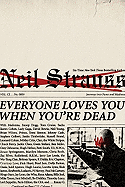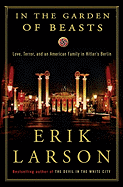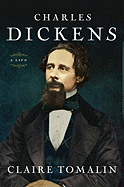A Book Tournament
There seems to be a tournament for everything else in the US, except college football, so why not a book tournament.
This morning I came across an article about The Morning New’s Tournament of Books. I checked it out and last year’s champion is a book I thought was great, Jennifer Egan’s A Visit From the Goon Squad. Never before have I heard of this tournament, but I like it and I like the great books that have been a part of this competition.
 Other notable shortlisted books are Let the Great World Spin, A Brief Wondrous Life of Oscar Wao, The Help, 2666, and many other great titles from 2010, 2009, and 2008.
Other notable shortlisted books are Let the Great World Spin, A Brief Wondrous Life of Oscar Wao, The Help, 2666, and many other great titles from 2010, 2009, and 2008.
To view this year’s nominees click here.
Happy Reading
New From Zafon
I have made it no secret that I love Carlos Ruiz Zafon’s novel, Shadow of the Wind and I was amazed to hear that he had written a second story that takes place in the world of the Cemetery of Forgotten Books. Now he has written a third book.
 The Prisoner of Heaven was publish in Spain recently and sadly it will take until next summer, 2012, for the English translation to be released in the United States. I wish I could read spanish, but I also need to read The Angel’s Game.
The Prisoner of Heaven was publish in Spain recently and sadly it will take until next summer, 2012, for the English translation to be released in the United States. I wish I could read spanish, but I also need to read The Angel’s Game.
I have loved Zafon’s work since I first read Shadow of the Wind and The Prince of Mist. I have often wondered what his stories would be like if they were ever made into a film and I am surprised they haven’t already. It seems as if very book is made into a film. If it ever is I hope Guillermo del Toro would be the director.
Anyway, keep an eye out for this book and if you have not yet read any of his novels I would suggest beginning with Shadow of the Wind. I’ll soon be reading The Angel’s Game and I shall tell you what I think of it.
Until then,
Happy Reading
The Ann Patchett Bookseller
How interesting would it be if all authors had their own independent bookstore, similar to all American presidents have their own libraries?
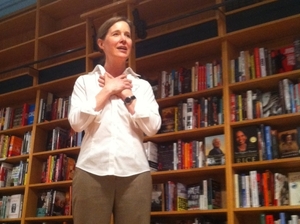 Part of this idea came true this year as author Ann Patchett opened her own independent bookstore in Nashville, Tennessee. I first read about the new bookstore, named Parnassus Books, on a NPR report, which you can find here. For me Patchett hit a home run with her opening as a way to support all independent bookstore that are struggling across the country.
Part of this idea came true this year as author Ann Patchett opened her own independent bookstore in Nashville, Tennessee. I first read about the new bookstore, named Parnassus Books, on a NPR report, which you can find here. For me Patchett hit a home run with her opening as a way to support all independent bookstore that are struggling across the country.
Then I started thinking about what historical authors I would have liked to see open a bookstore. The first author that came to mind was Charles Dickens. I can imagine that his bookstore would be old, dark, but beautiful in a very blue collar way. Other than Dickens I would also like to see the library of H.P. Lovecraft, although I do not think he would have a children’s section and he might not like customers in general. I don’t think he was a people person, which might not be good for business.
Please tell us some of your favorite authors who you would like to see open their own bookstore.
New Fiction this Holiday
 The massive new novel from international sensation Murakami (What I Talk About When I Talk About Running) sold out in his native Japan, where it was released in three volumes, and is bound to provoke a similar reaction in America, where rabid fans are unlikely to be deterred by its near thousand-page bulk. Nor should they be; Murakami’s trademark plainspoken oddness is on full display in this story of lapsed childhood friends Aomame and Tengo, now lonely adults in 1984 Tokyo, whose destinies may be curiously intertwined. Aomame is a beautiful assassin working exclusively for a wealthy dowager who targets abusive men. Meanwhile Tengo, an unpublished writer and mathematics instructor at a cram school, accepts an offer to write a novel called Air Chrysalis based on a competition entry written by an enigmatic 17-year-old named Fuka-Eri. Fuka-Eri proves to be dangerously connected to the infamous Sakigake cult, whose agents are engaged in a bloody game of cat-and-mouse with Aomame. Even stranger is that two moons have appeared over Tokyo, the dawning of a parallel time line known as 1Q84 controlled by the all-powerful Little People. The condensing of three volumes into a single tome makes for some careless repetition, and casual readers may feel that what actually occurs doesn’t warrant such length. But Murakami’s fans know that his focus has always been on the quiet strangeness of life, the hidden connections between perfect strangers, and the power of the non sequitur to reveal the associative strands that weave our modern world. 1Q84 goes further than any Murakami novel so far, and perhaps further than any novel before it, toward exposing the delicacy of the membranes that separate love from chance encounters, the kind from the wicked, and reality from what people living in the pent-up modern world dream about when they go to sleep under an alien moon.
The massive new novel from international sensation Murakami (What I Talk About When I Talk About Running) sold out in his native Japan, where it was released in three volumes, and is bound to provoke a similar reaction in America, where rabid fans are unlikely to be deterred by its near thousand-page bulk. Nor should they be; Murakami’s trademark plainspoken oddness is on full display in this story of lapsed childhood friends Aomame and Tengo, now lonely adults in 1984 Tokyo, whose destinies may be curiously intertwined. Aomame is a beautiful assassin working exclusively for a wealthy dowager who targets abusive men. Meanwhile Tengo, an unpublished writer and mathematics instructor at a cram school, accepts an offer to write a novel called Air Chrysalis based on a competition entry written by an enigmatic 17-year-old named Fuka-Eri. Fuka-Eri proves to be dangerously connected to the infamous Sakigake cult, whose agents are engaged in a bloody game of cat-and-mouse with Aomame. Even stranger is that two moons have appeared over Tokyo, the dawning of a parallel time line known as 1Q84 controlled by the all-powerful Little People. The condensing of three volumes into a single tome makes for some careless repetition, and casual readers may feel that what actually occurs doesn’t warrant such length. But Murakami’s fans know that his focus has always been on the quiet strangeness of life, the hidden connections between perfect strangers, and the power of the non sequitur to reveal the associative strands that weave our modern world. 1Q84 goes further than any Murakami novel so far, and perhaps further than any novel before it, toward exposing the delicacy of the membranes that separate love from chance encounters, the kind from the wicked, and reality from what people living in the pent-up modern world dream about when they go to sleep under an alien moon.
Click here for another review.
 MWA Grand Master Grafton’s finely tuned 22nd Kinsey Millhone novel (after 2009’s U Is for Undertow) finds the sharp-witted California PI filled with remorse after the apparent suicide of Audrey Vance, a woman she helped arrest for shoplifting. When Audrey’s perplexed fiancé, Marvin Striker, hires Kinsey to further investigate her death, Kinsey’s astute and relentless prying opens a Pandora’s box. Was Audrey tied to major crime lords? Are these racketeers linked to corrupt cops? Kinsey’s prickly personality and tart tongue antagonize just about everyone, including Marvin, several loan sharks, a stone-cold killer, and a hapless burglar who knows more than is healthy for him. For good measure, Kinsey gets punched in the face on her 38th birthday. An engrossing subplot involves an illicit love affair that neatly dovetails into the main story. This being 1988, Kinsey relies on her Rolodex, file cards, and land line, but her intuition is her chief asset. Readers will wish her well on her feisty and independent way to the end of the alphabet. Author tour.
MWA Grand Master Grafton’s finely tuned 22nd Kinsey Millhone novel (after 2009’s U Is for Undertow) finds the sharp-witted California PI filled with remorse after the apparent suicide of Audrey Vance, a woman she helped arrest for shoplifting. When Audrey’s perplexed fiancé, Marvin Striker, hires Kinsey to further investigate her death, Kinsey’s astute and relentless prying opens a Pandora’s box. Was Audrey tied to major crime lords? Are these racketeers linked to corrupt cops? Kinsey’s prickly personality and tart tongue antagonize just about everyone, including Marvin, several loan sharks, a stone-cold killer, and a hapless burglar who knows more than is healthy for him. For good measure, Kinsey gets punched in the face on her 38th birthday. An engrossing subplot involves an illicit love affair that neatly dovetails into the main story. This being 1988, Kinsey relies on her Rolodex, file cards, and land line, but her intuition is her chief asset. Readers will wish her well on her feisty and independent way to the end of the alphabet. Author tour.
 Wry humor, a fully realized lead, and tense atmospherics lift Sandford’s suspenseful fifth novel featuring Minnesota Bureau of Criminal Apprehension agent Virgil Flowers (after Edgar-winner Bad Blood). When a bomb kills a construction superintendent in Butternut Falls, a small community divided over the imminent arrival of a PyeMart megastore, Virgil gets on the case, even though it’s his day off. Three weeks earlier, a bomb exploded at PyeMart’s Michigan headquarters shortly before a board meeting. Willard Pye, the company head, was unharmed, but his executive assistant was blown to pieces. Given the number of locals hostile to the company, Virgil has no shortage of possible suspects, and the ante rises as more bombs are detonated. Coupling a thoroughly modern investigative approach with old-fashioned logical deduction, Virgil narrows in on his target. Sandford effortlessly conjures up the rhythms and personalities of a small town in one of his best outings to date.
Wry humor, a fully realized lead, and tense atmospherics lift Sandford’s suspenseful fifth novel featuring Minnesota Bureau of Criminal Apprehension agent Virgil Flowers (after Edgar-winner Bad Blood). When a bomb kills a construction superintendent in Butternut Falls, a small community divided over the imminent arrival of a PyeMart megastore, Virgil gets on the case, even though it’s his day off. Three weeks earlier, a bomb exploded at PyeMart’s Michigan headquarters shortly before a board meeting. Willard Pye, the company head, was unharmed, but his executive assistant was blown to pieces. Given the number of locals hostile to the company, Virgil has no shortage of possible suspects, and the ante rises as more bombs are detonated. Coupling a thoroughly modern investigative approach with old-fashioned logical deduction, Virgil narrows in on his target. Sandford effortlessly conjures up the rhythms and personalities of a small town in one of his best outings to date.
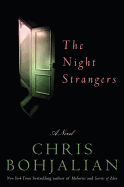 Bestseller Bohjalian’s latest novel (after Secrets of Eden) is a gripping paranormal thriller set in a remote New England town. Airline pilot Chip Linton is beset by survivor’s guilt after crashing his plane upon takeoff, killing all but nine aboard. His family moves to Bethel, N.H., to escape the media glare while Chip recovers from PTSD, but they soon discover that the sleepy village harbors evil things. Their new home, once the site of a young boy’s suicide, contains mysterious passageways, hidden weapons, and a secret crypt. And their neighbors, New Age gardeners and homeopaths, soon reveal themselves to be occultists with designs on the Lintons’ twins. Chip begins receiving visits from his dead passengers, including an eight-year-old and her bloodthirsty father, who demands Chip find her a friend—at any cost. Meticulous research and keen attention to detail give depth and character to Bohjalian’s eerie world, but the spookiness consistently gives way to silliness, and the Lintons’ typical response to the strange goings on, an uneasy mix of suspicion and credulity, is a problem. Still, Bohjalian is a master,, and the slow-mounting dread makes this a frightful ride.
Bestseller Bohjalian’s latest novel (after Secrets of Eden) is a gripping paranormal thriller set in a remote New England town. Airline pilot Chip Linton is beset by survivor’s guilt after crashing his plane upon takeoff, killing all but nine aboard. His family moves to Bethel, N.H., to escape the media glare while Chip recovers from PTSD, but they soon discover that the sleepy village harbors evil things. Their new home, once the site of a young boy’s suicide, contains mysterious passageways, hidden weapons, and a secret crypt. And their neighbors, New Age gardeners and homeopaths, soon reveal themselves to be occultists with designs on the Lintons’ twins. Chip begins receiving visits from his dead passengers, including an eight-year-old and her bloodthirsty father, who demands Chip find her a friend—at any cost. Meticulous research and keen attention to detail give depth and character to Bohjalian’s eerie world, but the spookiness consistently gives way to silliness, and the Lintons’ typical response to the strange goings on, an uneasy mix of suspicion and credulity, is a problem. Still, Bohjalian is a master,, and the slow-mounting dread makes this a frightful ride.
I cannot wait to read this next book.
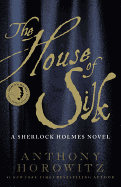 The hype surrounding what’s being billed as the first pastiche ever officially approved by the Conan Doyle estate is amply justified in this authentic, if melancholy, recreation of the beloved Baker Street characters by the creator of the acclaimed Foyle’s War TV series. A year after Sherlock Holmes’s death (from natural causes), Watson takes up his pen one last time to recount a case they shared in 1890 that was “too monstrous, too shocking” to appear in print. The opening is prosaic enough. London art dealer Edmund Carstairs asks for the detective’s help after a shadowy figure in a flat cap, apparently an Irish-American thug bent on revenge, surfaces near Carstairs’s Wimbledon home. When a murder follows Holmes getting involved, the trail leads him and the good doctor to a powerful secret society known as the House of Silk. Horowitz gets everything right–the familiar narrative voice, brilliant deductions, a very active role for Watson, and a perplexing and disturbing series of puzzles to unravel–and the legion of fans of the originals will surely be begging for Horowitz to again dip into Watson’s trove of untold tales. Author tour.
The hype surrounding what’s being billed as the first pastiche ever officially approved by the Conan Doyle estate is amply justified in this authentic, if melancholy, recreation of the beloved Baker Street characters by the creator of the acclaimed Foyle’s War TV series. A year after Sherlock Holmes’s death (from natural causes), Watson takes up his pen one last time to recount a case they shared in 1890 that was “too monstrous, too shocking” to appear in print. The opening is prosaic enough. London art dealer Edmund Carstairs asks for the detective’s help after a shadowy figure in a flat cap, apparently an Irish-American thug bent on revenge, surfaces near Carstairs’s Wimbledon home. When a murder follows Holmes getting involved, the trail leads him and the good doctor to a powerful secret society known as the House of Silk. Horowitz gets everything right–the familiar narrative voice, brilliant deductions, a very active role for Watson, and a perplexing and disturbing series of puzzles to unravel–and the legion of fans of the originals will surely be begging for Horowitz to again dip into Watson’s trove of untold tales. Author tour.
 In Rendell’s fine follow-up to A Sight for Sore Eyes (1999), a non-Wexford novel in which a working-class aesthete’s quest for beauty earned him an ugly, unexpected end, horror strikes the home improvement plans of Martin and Anne Rokeby. The couple are seriously disconcerted to discover multiple bodies in varying states of decay in a long-forgotten vault beneath their London garden. In the art world, the Rokebys’ address is famous as the setting of a ’70s-era masterpiece, Marc and Harriet in Orcadia Place, a painting depicting a rock star and his girlfriend. Though Inspector Wexford has retired, the police soon summon him to help solve this most gothic case. Has more than one killer used the vault as a body dump? Rendell’s recent style can feel a bit anemic when contrasted with that of A Sight for Sore Eyes, and she populates this sequel with people who resemble sketches rather than vivid, complex characters. Still, this easily outshines most of the competition on either side of the Atlantic.
In Rendell’s fine follow-up to A Sight for Sore Eyes (1999), a non-Wexford novel in which a working-class aesthete’s quest for beauty earned him an ugly, unexpected end, horror strikes the home improvement plans of Martin and Anne Rokeby. The couple are seriously disconcerted to discover multiple bodies in varying states of decay in a long-forgotten vault beneath their London garden. In the art world, the Rokebys’ address is famous as the setting of a ’70s-era masterpiece, Marc and Harriet in Orcadia Place, a painting depicting a rock star and his girlfriend. Though Inspector Wexford has retired, the police soon summon him to help solve this most gothic case. Has more than one killer used the vault as a body dump? Rendell’s recent style can feel a bit anemic when contrasted with that of A Sight for Sore Eyes, and she populates this sequel with people who resemble sketches rather than vivid, complex characters. Still, this easily outshines most of the competition on either side of the Atlantic.





